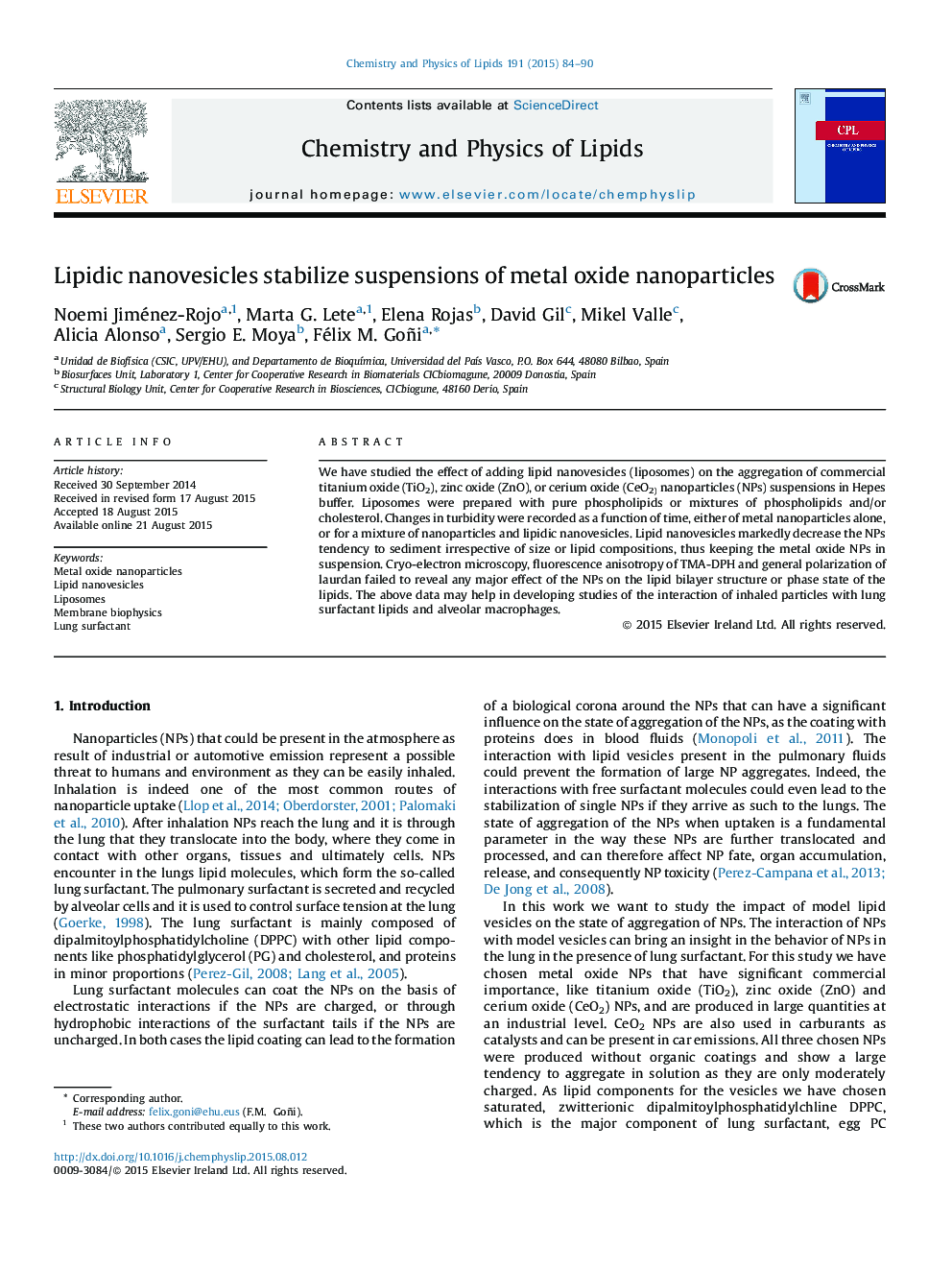| کد مقاله | کد نشریه | سال انتشار | مقاله انگلیسی | نسخه تمام متن |
|---|---|---|---|---|
| 1251598 | 1496286 | 2015 | 7 صفحه PDF | دانلود رایگان |
• Metal oxide nanoparticles (TiO2, ZnO, CeO2) sediment readily in aqueous suspension.
• Lipidic nanovesicles (liposomes) remain in suspension for a long time.
• Metal oxide nanoparticles are stabilized in the presence of liposomes.
• Weak electrostatic interactions appear to be responsible for the effect.
• This may help in understanding the interaction of inhaled particles with lung surfactant.
We have studied the effect of adding lipid nanovesicles (liposomes) on the aggregation of commercial titanium oxide (TiO2), zinc oxide (ZnO), or cerium oxide (CeO2) nanoparticles (NPs) suspensions in Hepes buffer. Liposomes were prepared with pure phospholipids or mixtures of phospholipids and/or cholesterol. Changes in turbidity were recorded as a function of time, either of metal nanoparticles alone, or for a mixture of nanoparticles and lipidic nanovesicles. Lipid nanovesicles markedly decrease the NPs tendency to sediment irrespective of size or lipid compositions, thus keeping the metal oxide NPs in suspension. Cryo-electron microscopy, fluorescence anisotropy of TMA-DPH and general polarization of laurdan failed to reveal any major effect of the NPs on the lipid bilayer structure or phase state of the lipids. The above data may help in developing studies of the interaction of inhaled particles with lung surfactant lipids and alveolar macrophages.
Figure optionsDownload as PowerPoint slide
Journal: Chemistry and Physics of Lipids - Volume 191, October 2015, Pages 84–90
